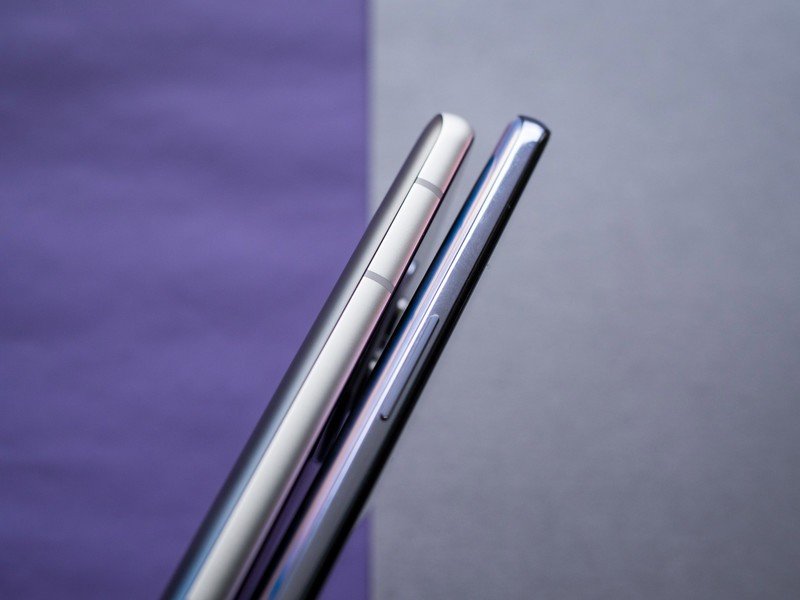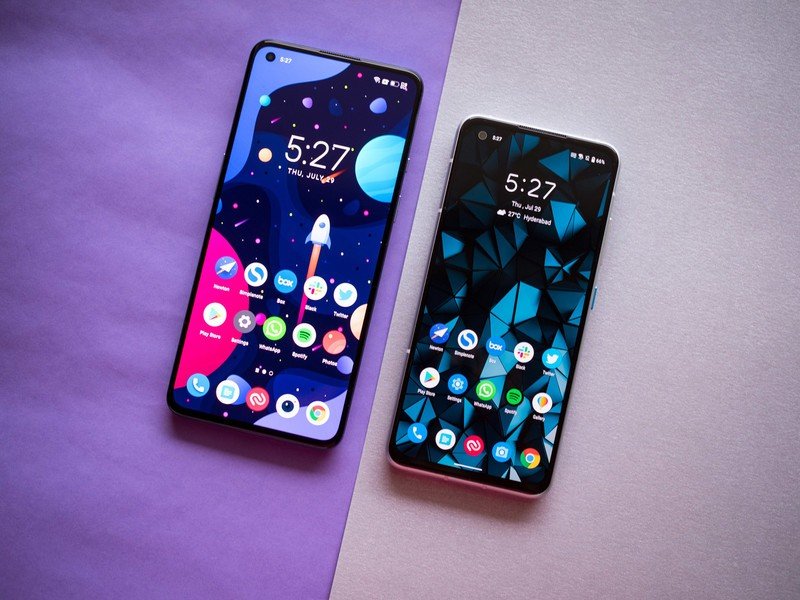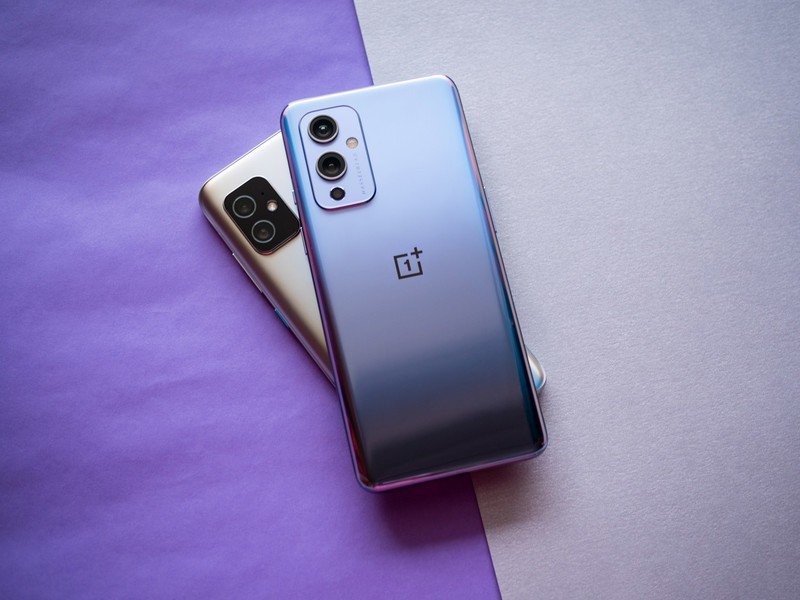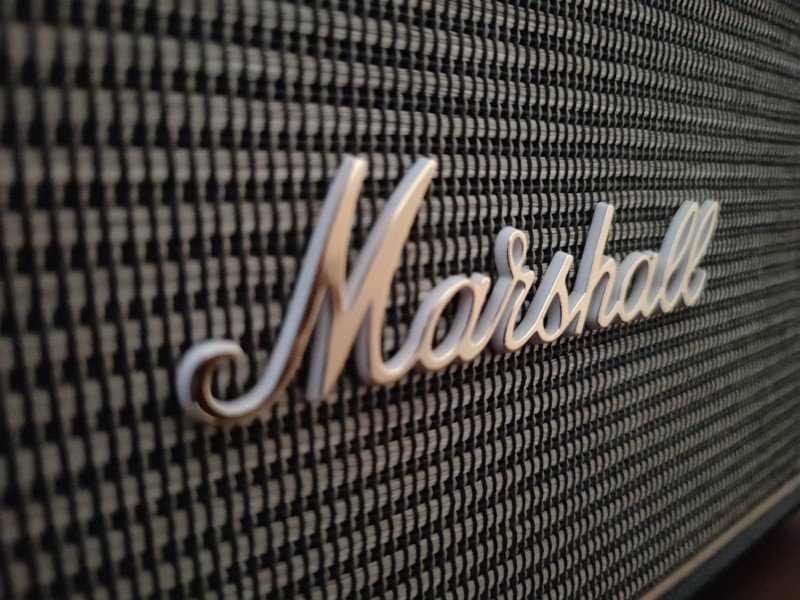OnePlus 9 vs. ASUS Zenfone 8: Which should you buy?

OnePlus 9

The OnePlus 9 epitomizes value flagships in 2021: it has top-notch hardware backed by a vibrant 120Hz AMOLED screen, cameras that take great photos in any lighting, 65W fast charging as well as wireless charging, and software that's devoid of any bloatware. The icing on the cake is that the device will get three Android updates.
OnePlus 9
Flagship value
ASUS Zenfone 8

With the Zenfone 8, ASUS is delivering the best compact phone in the market today. The phone has the same high-end internals as the OnePlus 9, and it also has a few extras, like an IP68 rating an d a 3.5mm jack. Combine that with a clean software and better value, and you get a great overall device.
ASUS Zenfone 8
Compact powerhouse
If you're in the market for a value flagship, you're not short of great options. This segment has flourished over the last two years, and the latest models from OnePlus and ASUS push the boundaries of hardware and camera innovation. So let's find out if you should pick up OnePlus' offering or go with ASUS.
OnePlus 9 vs. ASUS Zenfone 8 Design overview
With the OnePlus 9, you get a value flagship that gives you the latest internal hardware backed by reliable cameras at a lower price point. As true flagships have crossed the $1,000 mark, value-focused alternatives that offered similar hardware and feature-set have thrived, and the OnePlus 9 is one of the best Android phones you can get in this category.
The OnePlus 9 has a more exciting design, but the Zenfone 8 is easier to use.
That said, there's plenty of competition in this segment, and the Zenfone 8 is one of the best alternatives. In a world where phones are getting taller and narrower, ASUS has delivered what is possibly the best compact Android phone. The Zenfone 8 features the same Snapdragon 888 chipset as the OnePlus 9, and it has a 120Hz AMOLED screen, great cameras, and all-day battery life.
When it comes to the design, the OnePlus 9 features a new camera housing with large rings around the sensors, and it gives the device an upmarket look. The camera island gets the same coat of paint as the back, adding to the device's allure. The Winter Mist color option in particular looks great, and it features a lighter shade of lavender on the sides with a glossy coat.









The Zenfone 8 feels muted by comparison, with the device available in silver or black variants. It lacks the excitement of the OnePlus 9, and while the rear camera housing looks clean, it would have stood out a bit more if it had a matching paint job as the back. Where the Zenfone 8 misses out in terms of flair it makes up for in material choices. The OnePlus 9 comes with a glass back and a fiber-reinforced plastic mid-frame, but the Zenfone 8 features a glass back and an aluminum chassis that makes it more durable.
Get the latest news from Android Central, your trusted companion in the world of Android
But the biggest highlight with the Zenfone 8 is its size. Coming in at just 148mm (12mm less than the OnePlus 9), it is ideal for one-handed use. At 169g, it is also 23g lighter than the OnePlus 9, and the result is a device that is a joy to use. I haven't used a compact phone in a few years, but after switching to the Zenfone 8 (from the ginormous Mi 11 Ultra), I began to see the value in this form factor. The Zenfone 8 is the ideal size for my use case; it's not too small that streaming videos or playing games becomes a hassle, but it's manageable enough that I can still use it one-handed.
So even though it doesn't necessarily have the same design flourish as the OnePlus 9, the Zenfone 8 wins out for its aluminum chassis and compact form factor.
OnePlus 9 vs. ASUS Zenfone 8 Display and hardware

The OnePlus 9 comes with a 6.55-inch AMOLED panel with 120Hz refresh rate, and it can go up to 1100 nits for HDR10+ content. Although the Zenfone 8 has a diminutive size, it features a 5.9-inch screen that uses AMOLED tech and offers the same 120Hz refresh rate and HDR10+.
Both phones have gorgeous 120Hz AMOLED panels and stereo sound.
You get a suite of customization options with either device, including the ability to manually adjust the color balance, set up always-on mode, adjust the refresh rate, and more. Both phones have the same FHD+ resolution (2400 x 1080) and feature stereo sound. In side-by-side testing, the Zenfone 8 got louder and produced more detailed sound, but the OnePlus 9 isn't far behind.
I didn't have any issues with the AMOLED panel on these devices, and the vibrant screen combined with stereo sound makes the OnePlus 9 and Zenfone 8 ideal for streaming videos or playing games. While the Zenfone 8 has a smaller screen, I didn't feel like I was missing out in this particular area. And as an added bonus, the Zenfone 8 has a 3.5mm jack.

There isn't much to differentiate between either device on the hardware side of things. Both phones are powered by Qualcomm's 5nm Snapdragon 888 chipset and deliver incredible performance in just about every use case.
These devices are evenly matched on the hardware front, but the Zenfone 8 gives you double the storage.
Thanks to the 120Hz refresh rate and UI optimizations, these are two of the fastest phones you'll find for under $800. I didn't see any slowdowns or lag after weeks' worth of use, and they handled even demanding games with ease.
Both phones feature 8GB of RAM as standard and UFS 3.1 storage, but the Zenfone 8 edges out the OnePlus 9 in terms of value. The $700 variant of the Zenfone 8 comes with 8GB of RAM and 256GB of storage, with OnePlus offering 8GB of RAM and 128GB of storage.
There's NFC and Bluetooth 5.2 on both devices, including the AptX HD audio codec. The Zenfone 8 also gets Wi-Fi 6E, AptX Adaptive codec, and comes with IP68 dust and water resistance as standard. While the standard OnePlus 9 is also water resistant, it misses out on an IP rating — unless you're getting the T-Mobile variant.
That said, the OnePlus 9 has an obvious edge in terms of battery life. Thanks to a larger 4500mAh battery, the phone manages to last longer than the Zenfone 8. You'll get an additional hour's worth of use with the OnePlus 9, and when you need to charge the device, 65W fast charging takes under 45 minutes to fully charge the device. The Zenfone 8 manages to last all day, but it doesn't quite have the same longevity, and with 30W fast charging, it takes longer to charge the battery.
You also get 15W wireless charging with the OnePlus 9, a feature that's missing on the Zenfone 8. The Indian variant of the OnePlus 9 misses out on wireless charging as well, but with the Zenfone 8 not available in India just yet, choosing between the two is a moot point.
OnePlus 9 vs. ASUS Zenfone 8 Specs

| Header Cell - Column 0 | OnePlus 9 | ASUS Zenfone 8 |
|---|---|---|
| Operating system | Android 11 OxygenOS 11 | Android 11 ZenUI |
| Display | 6.55-inch 120Hz AMOLED 2400x1080 (20:9) HDR10+ Gorilla Glass 5 | 5.9-inch 120Hz AMOLED 2400x1080 (20:9) HDR10+ Gorilla Glass Victus |
| Chipset | Snapdragon 888 1 x 2.84GHz Cortex X1 3 x 2.42GHz Cortex A78 4 x 1.80GHz Cortex A55 5nm | Snapdragon 888 1 x 2.84GHz Cortex X1 3 x 2.42GHz Cortex A78 4 x 1.80GHz Cortex A55 5nm |
| GPU | Adreno 660 | Adreno 660 |
| RAM | 8GB/12GB LPDDR5 | 8GB/12GB LPDDR5 |
| Storage | 128GB/256GB UFS3.1 | 128GB/256GB UFS3.1 |
| MicroSD slot | ❌ | ❌ |
| Rear camera 1 | 48MP Sony IMX689 f/1.8, 1.12um, EIS 8K at 30fps, 4K at 60fps Hasselblad Camera for Mobile | 64MP, 0.8um f/1.8, EIS 4K at 120fps |
| Rear camera 2 | 50MP Sony IMX766 (wide-angle) f/2.2, freeform lens 4K at 60fps | 12MP wide-angle, f/2.2 112-degree field-of-view |
| Rear camera 3 | 2MP monochrome camera | ❌ |
| Front camera | 16MP Sony IMX471 f/2.4, 1.0um, EIS Fixed focus | 12MP, f/2.5 1080p video, fixed focus |
| Connectivity | 5G Sub-6, SA and NSA Wi-Fi 6, Bluetooth 5.2 NFC, AptX, A-GPS | 5G Sub-6, SA and NSA Wi-Fi 6E, Bluetooth 5.2 NFC, AptX HD, A-GPS |
| Battery | 4500mAh Non-removable | 4000mAh Non-removable |
| Charging | USB-C 3.1 Warp Charge 65 (10V/6.5A) | USB-C 2.0 30W fast charging |
| Audio | USB-C Stereo speakers | USB-C Stereo speakers |
| Water resistance | ❌ | IP68 |
| Security | In-display fingerprint (optical) | In-display fingerprint (optical) |
| Dimensions | 160 x 74.2 x 8.7mm 192g | 148 x 68.5 x 8.9mm 169g |
| Colors | Winter Mist, Arctic Sky, Astral Black | Black, Silver |
OnePlus 9 vs. ASUS Zenfone 8 Cameras

The OnePlus 9 has a 48MP Sony IMX689 camera as the primary module, with a 50MP lens for the wide-angle lens. There's also a 2MP monochrome lens, but it is limited in its effectiveness, so most of the time you'll be using two cameras. The Zenfone 8 has a 64MP lens that's unchanged from last year, and there's a 12MP wide-angle lens.
Source: Harish Jonnalagadda / Android Central
OnePlus 9 to the left, Zenfone 8 on the right
Source: Harish Jonnalagadda / Android Central
Source: Harish Jonnalagadda / Android Central
Source: Harish Jonnalagadda / Android Central
The OnePlus 9 uses Hasselblad's color science, and while that doesn't lead to accurate shots, the exaggerated colors and high saturation makes photos look very dramatic. That said, the Zenfone 8 does a great job in its own right, considering the hardware itself hasn't changed from last year.
ASUS rolled out a series of software updates to the Zenfone 8 to optimize the camera tuning, and the results are clearly evident. The Zenfone 8 holds its own against the OnePlus 9, with the phone managing to deliver photos with accurate colors and plenty of detail. You'll find increased noise levels in low-light shots on the Zenfone 8, but the colors don't look washed out. Overall, there's plenty to like from both phones here.
OnePlus 9 vs. ASUS Zenfone 8 Software

Over the years, OnePlus has established itself as the company that focused on clean software without any bloatware. OxygenOS continues to deliver on those ideals, but there are major changes afoot. The interface now uses ColorOS as a base — as seen on the Nord 2 — and going forward there will be UI changes.
OnePlus has a distinct edge when it comes to software — for now.
But for now, OxygenOS is still one of the best options if you want an interface that's easy to use, highly customizable, and without any bloat. OnePlus is also guaranteeing three Android version updates and four years of security patches to the OnePlus 9 — that's one of the reasons it switched to ColorOS.
OxygenOS isn't the only option if you want a bloat-free interface. ASUS overhauled ZenUI three years ago, switching to a vanilla Android interface without any overt customization and getting rid of the bloatware. The result is one of the best third-party skins you;ll find today. Like OxygenOS, ZenUI gives you a lot of customization options, and the interface itself is well-optimized for the 120Hz panel.
But the biggest issue with ZenUI is the update cadence. ASUS guarantees "at least" two Android updates, but the brand has struggled to deliver updates on time. It looks like things are changing for the better this year — my Zenfone 8 has already picked up two updates in the month I used it — but ASUS is on the backfoot in this particular area.
OnePlus 9 vs. ASUS Zenfone 8 Which should you buy?

If you're looking to pick up a phone in the vicinity of $700, the OnePlus 9 and Zenfone 8 are two of the best options right now. The OnePlus 9 nails the fundamentals, delivering a modern design with the latest hardware, a gorgeous AMOLED screen, all-day battery life with fast charging, and a clean software with three guaranteed updates.
The OnePlus 9 gets a lot right, but if you want a compact phone, the Zenfone 8 is the obvious choice.
The Zenfone 8 almost feels like a throwback. It has a no-nonsense design backed by great hardware and reliable cameras, and the form factor means you can use it one-handed without having to contort your fingers. It also has IP68 dust and water resistance and even a 3.5mm jack, and the cameras hold their own in this category — it doesn't really miss out in terms of table stakes features.
There are a few downsides: there's no wireless charging, and the battery doesn't last as long as the OnePlus 9. That said, if you're in the market for a smaller phone, the Zenfone 8 gives you everything you're looking for in a value flagship in an easier-to-use form factor. And that alone makes it worthy of consideration.

The mainstream choice
The OnePlus 9 delivers in key areas, offering an elegant design with the latest internal hardware, Hasselblad-tuned cameras, all-day battery life, and 65W fast charging. It also has a clean interface with no bloatware out of the box, and with three guaranteed Android updates, it will stay relevant for longer.

The best compact phone
The Zenfone 8 gives you the latest hardware and a stunning 120Hz AMOLED screen, but in a compact form factor that's a delight to use. You're still getting all the features — including IP68 rating and a 3.5mm jack — along with a clean software without any bloatware, and cameras that take good photos in any lighting scenario. If you like the idea of a smaller phone with high-end hardware, the Zenfone 8 is the obvious choice.

Harish Jonnalagadda is Android Central's Senior Editor overseeing mobile coverage. In his current role, he leads the site's coverage of Chinese phone brands, networking products, and AV gear. He has been testing phones for over a decade, and has extensive experience in mobile hardware and the global semiconductor industry. Contact him on Twitter at @chunkynerd.








